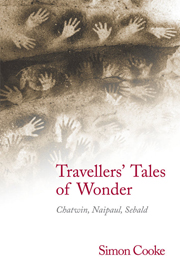Introduction: The Wonder that Came Later
Published online by Cambridge University Press: 05 October 2013
Summary
[W]e have said or spoken nothing of the Greater Sea nor of the Provinces which are around it, though we have well explored it all […] I omit to speak of it, since it seems to me to be wearisome to speak that which may be unnecessary and useless, nor that which others know always, since they are so many who explore it and sail it every day, as is well known, such as Venetians and Genoese and Persians and many other people who make that journey so often that everyone knows what is there, and therefore I am silent and say nothing to you of that.
Marco Polo, The Description of the World (1938: 489–90)To speak of travellers' tales of wonder in late twentieth-century literature may well strike some as oxymoronic, anachronistic, quaint: more tall tale than area of inquiry. Already at the end of the thirteenth century, the ‘wise and learned citizen of Venese’ (Polo 1938: 73) was beginning to tire of accounts of the Provinces. What promise for wonder voyaging, then, when the idiom of the ‘global village’ (McLuhan 1988: 28-31) itself rings overly familiar? Travellers' tales of wonder belong, according to most accounts, in bygone ages: to Messer Polo; to the medieval Wonder Book; to Columbus and Ralegh and the first astonishing, and then brutally violent, Renaissance encounters between Europe and what would enter Western history – in being all but destroyed – as the ‘New World’ of the Americas.
- Type
- Chapter
- Information
- Travellers' Tales of WonderChatwin, Naipaul, Sebald, pp. 1 - 12Publisher: Edinburgh University PressPrint publication year: 2013



